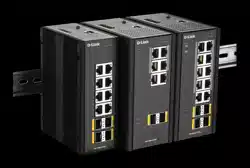Loading ...
Loading ...
Loading ...

Command Descriptions
81
otherwise no longer present on the port, the port's QoS Class is immediately reverted
to the original QoS Class (which may be changed by the administrator in the
meanwhile without affecting the RADIUS-assigned).
This option is only available for single-client modes, i.e.
• Port-based 802.1X
• Single 802.1X
RADIUS attributes used in identifying a QoS Class:
The User-Priority-Table attribute defined in RFC4675 forms the basis for
identifying the QoS Class in an Access-Accept packet.
Only the first occurrence of the attribute in the packet will be considered, and to be
valid, it must follow this rule:
• All 8 octets in the attribute's value must be identical and consist of ASCII characters
in the range '0' - '7', which translates into the desired QoS Class in the range [0; 7].
RADIUS-Assigned VLAN
Enabled
When RADIUS-Assigned VLAN is both globally enabled and enabled (checked) for a
given port, the switch reacts to VLAN ID information carried in the RADIUS Access-
Accept packet transmitted by the RADIUS server when a supplicant is successfully
authenticated. If present and valid, the port's Port VLAN ID will be changed to this
VLAN ID, the port will be set to be a member of that VLAN ID, and the port will be
forced into VLAN unaware mode. Once assigned, all traffic arriving on the port will be
classified and switched on the RADIUS-assigned VLAN ID.
If (re-)authentication fails or the RADIUS Access-Accept packet no longer carries a
VLAN ID or it's invalid, or the supplicant is otherwise no longer present on the port,
the port's VLAN ID is immediately reverted to the original VLAN ID (which may be
changed by the administrator in the meanwhile without affecting the RADIUS-
assigned).
This option is only available for single-client modes, i.e.
• Port-based 802.1X
• Single 802.1X
For trouble-shooting VLAN assignments, use the "Monitor→VLANs→VLAN
Membership and VLAN Port" pages. These pages show which modules have
(temporarily) overridden the current Port VLAN configuration.
RADIUS attributes used in identifying a VLAN ID:
RFC2868 and RFC3580 form the basis for the attributes used in identifying a VLAN
ID in an Access-Accept packet. The following criteria are used:
• The Tunnel-Medium-Type, Tunnel-Type, and Tunnel-Private-
Group-ID
attributes must all be present at least once in the Access-Accept packet.
Loading ...
Loading ...
Loading ...
